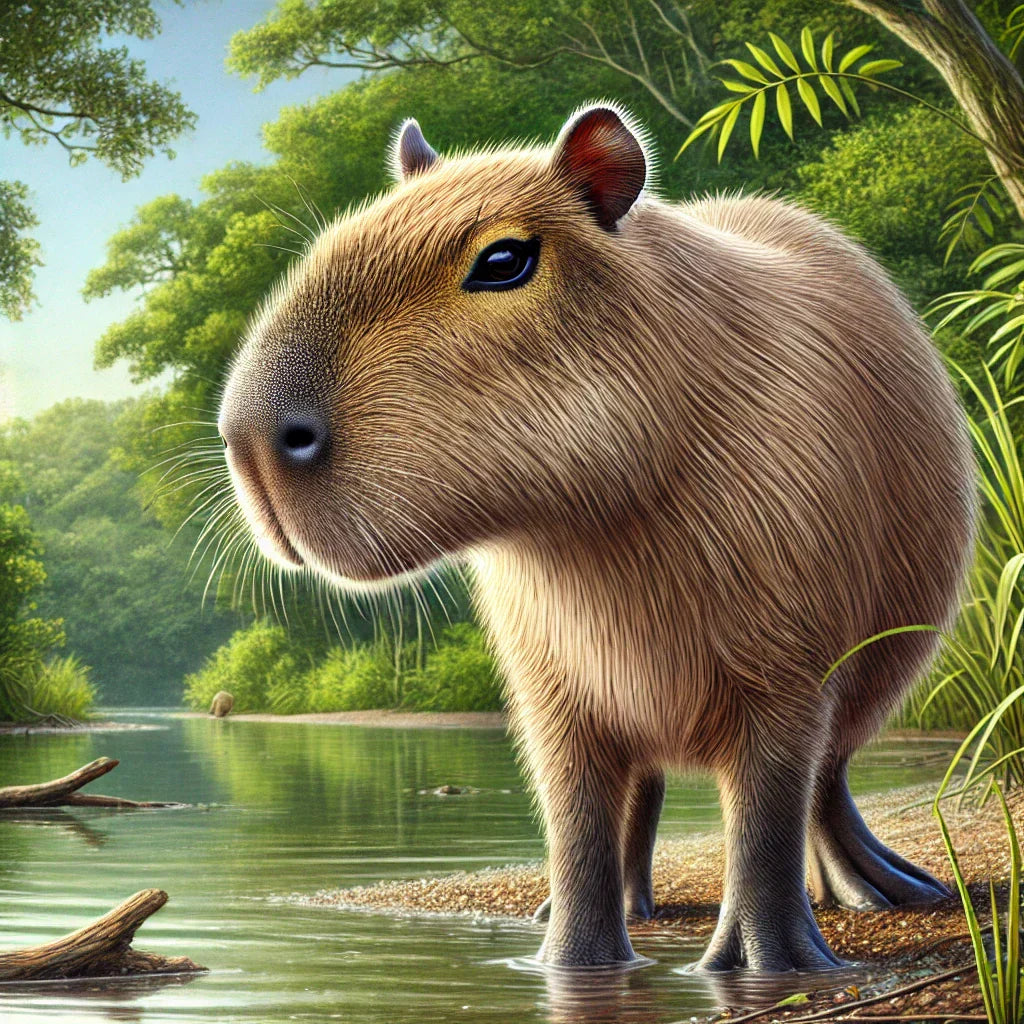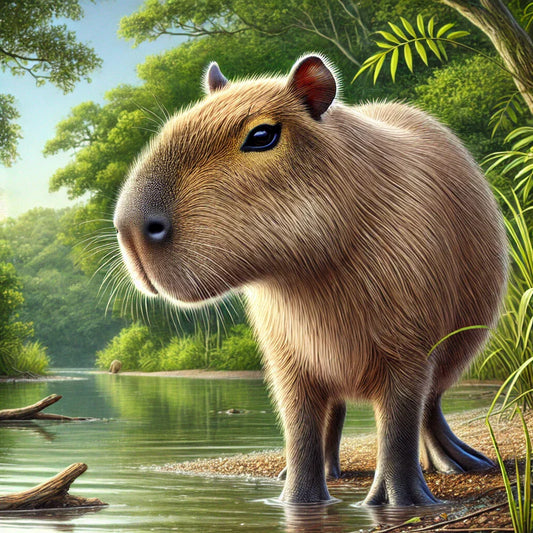
Capybara Anatomy: A Closer Look at Their Physical Features
Share
Capybaras, the world’s largest rodents, are fascinating creatures with unique physical adaptations that allow them to thrive in their natural habitats. From their webbed feet to their ever-growing teeth, capybaras possess distinct features that make them well-suited for semi-aquatic life. In this article, we take an in-depth look at capybara anatomy and how their physical traits contribute to their survival.
1. Size and Build
Capybaras are robust animals, typically measuring between 3.5 to 4.5 feet in length and weighing anywhere from 77 to 146 pounds. Their cylindrical bodies are well-adapted for swimming, with a compact structure that minimizes resistance in the water. Unlike other rodents, capybaras have a proportionally larger body size, making them stand out in the animal kingdom.
2. Water-Adapted Feet
One of the most remarkable features of capybaras is their webbed feet. These specialized feet enhance their swimming abilities, allowing them to move effortlessly through water. Their strong limbs and webbing provide excellent propulsion, making capybaras highly efficient swimmers. On land, their feet help them navigate muddy or marshy terrains with ease.
3. Eyes, Ears, and Nostrils Placement
Capybaras have eyes, ears, and nostrils positioned on the upper part of their heads, an adaptation similar to that of a hippopotamus. This placement allows them to remain mostly submerged in water while keeping an eye on their surroundings. It also helps them stay hidden from predators such as jaguars and caimans.
4. Fur and Skin
Capybaras have coarse, brownish fur that provides insulation but does not fully repel water. This means they dry off relatively quickly after swimming. Their skin is thick, helping protect them from sunburn in their open grassland habitats. Since capybaras spend a significant amount of time in the water, they also secrete an oily substance that helps maintain their skin’s moisture.
5. Ever-Growing Teeth
Like other rodents, capybaras have continuously growing incisors. They must gnaw on tough vegetation such as grasses, reeds, and bark to keep their teeth at a manageable length. Their strong jaw muscles support their herbivorous diet, allowing them to chew fibrous plant material efficiently.
6. Tail or No Tail?
Unlike many other rodents, capybaras lack a visible tail. Instead, they have a small, vestigial tail hidden beneath their thick fur. This absence of a prominent tail helps streamline their bodies for better movement in water.
7. Digestive System
Capybaras have a highly specialized digestive system, which includes an enlarged cecum that allows them to ferment plant matter efficiently. This adaptation enables them to extract the maximum amount of nutrients from their fiber-rich diet. They also engage in coprophagy (eating their own feces) to re-digest plant material and absorb more nutrients.
8. Social and Sensory Adaptations
Capybaras are social animals that rely on their keen senses to communicate with each other. They use a combination of vocalizations, body language, and scent marking to interact with their groups. Their highly developed olfactory senses help them identify individuals and establish territory.
Conclusion
Capybaras’ unique physical features make them one of nature’s most intriguing creatures. Their anatomy is perfectly designed for a semi-aquatic lifestyle, from their webbed feet and water-adapted senses to their strong teeth and digestive system. Understanding their anatomy provides insight into how these gentle giants have adapted to thrive in the wild.
Keywords:
capybara anatomy, capybara physical features, capybara body structure, capybara facts, capybara size, capybara teeth, capybara webbed feet, capybara fur, capybara digestive system, capybara adaptations, capybara swimming, capybara tail, capybara eyes and ears, capybara skull, capybara biology, capybara natural habitat, capybara rodent, capybara social behavior, capybara lifespan, capybara care.












